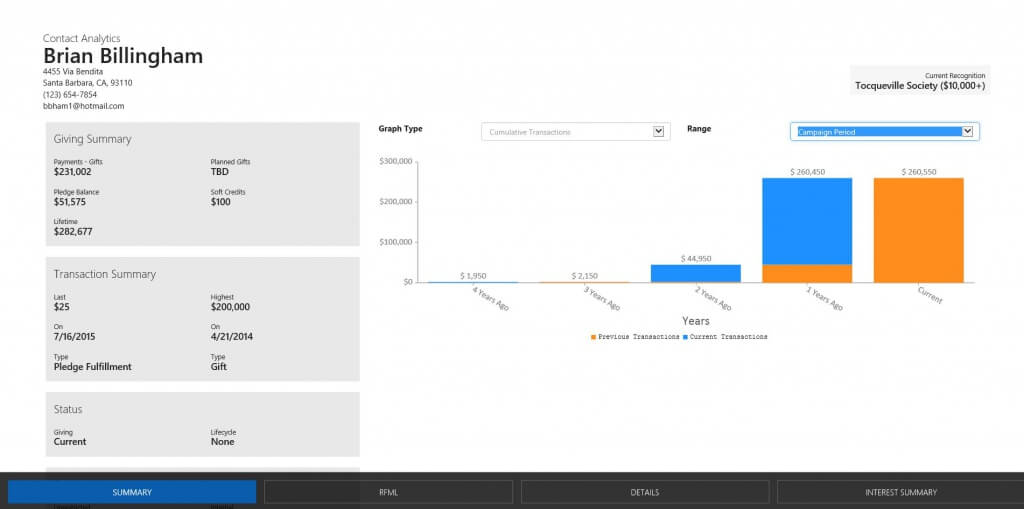Discover how to identify, evaluate, and motivate your donors
Recency. Frequency. Monetary value. The all-powerful RFM.
These three metrics have been drilled into the heads of fundraisers since the early days of nonprofits and fundraising organizations—but what worked in decades past is no longer the most effective way to understand and engage constituents in the 21st century.
Today's donors want more. They want to be involved with helping as well as providing financial support for the causes to which they are connected.
Just as A/B testing is giving way to multivariate prescriptive analytics, oversimplified donor & fundraising models can now include a vast array of data points. New ways to approach cultivation and constituent lifecycle management must allow for new processes to identify emerging trends and patterns.
The problem with data.
These days, most businesses and nonprofits are easily generating vast quantities of data about their constituents and customers. The difficulty lies in collecting and using that data to produce actionable insights.
This is particularly important when it comes to individual fundraising programs such as major gifts or planned giving. It can be hard to get a single, clear snapshot of a donor's engagement with the organization.
So how do you simplify the process to make the most of all that information?
Enter constituent analytics.
The at-a-glance nature of the constituent analytics interface provides a concise, easy-to-read summary so nonprofits can benefit from the greatest asset they already have: their own data.
This means your nonprofit can now make use of that information to build better relationships with existing donors, as well as discover and appeal to more potential donors like them.
What makes constituent analytics different?
Constituent analytics allows users to select, sort, and segment individual donor profiles to uncover trends and identify characteristics.
The summary view of constituents is driven by massive volumes of information from many different locations within the donor database. This means users can also perform extensive or complex searches against the underlying information.
This flexibility helps you quickly locate individuals with similar profiles to develop and execute highly targeted marketing lists which have been shown to increase fundraising effectiveness tremendously.
Another distinctive feature of constituent analytics is that it allows the introduction of a fourth dimension to the traditional RFM model: constituent lifecycle management.
Constituent lifecycle management takes a holistic, multidimensional approach to assessing donor giving history, preferences, motivational interests, interactions, and transactions. This provides fundraisers with reliable insights to help build strong relationships with current and future donors.
Constituent analytics can also be used to quickly identify the cultivation stage of an individual donor in order to:
- Show thanks and support to donors who are active, current, and possibly staged for a lift.
- Renew contact with donors who may be about to lapse and tap into their motivational interest to spur a fresh gift or pledge.
- Reach out to lapsed donors to determine how to best reconnect them to your mission.
How StratusLIVE Constituent Analytics can help.
In the past, many nonprofits have had to export their databases to outside data management consulting firms to aggregate and examine their data to locate patterns and to construct visual representations of donor data.

Today, nonprofits who are using the latest version of StratusLIVE 365 have an enormous edge in the quest to make donor data work for them. Easy-to-read dashboards, real-time donor information, giving summary, most recent transactions, and more are all available at the fundraiser's fingertips.
StratusLIVE is built on the Microsoft Dynamics CRM platform, which means most tools will look and feel very similar to software you already use. Everything is arranged in an easy-to-read layout that is intuitive and familiar, improving adoption rates and efficiency.
To see a view Contact Analytics in action, watch this quick video for a day in the life of a Major Gifts Officer using StratusLIVE 365 Contact Analytics.






